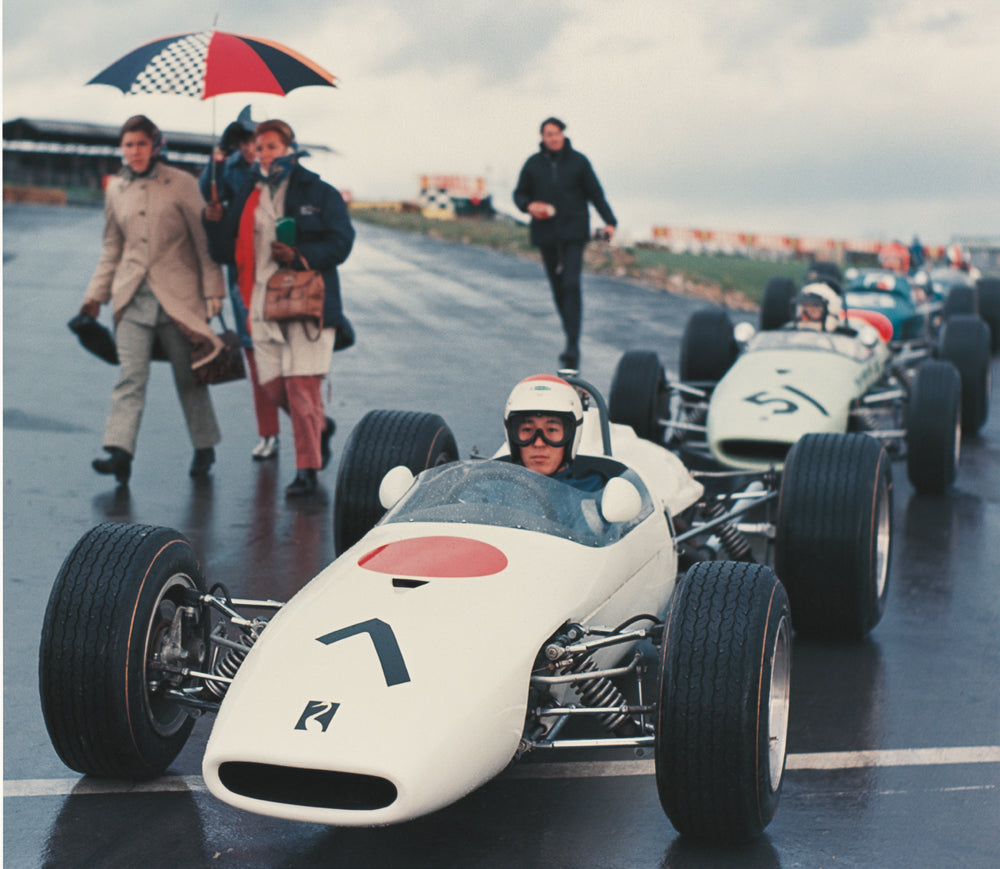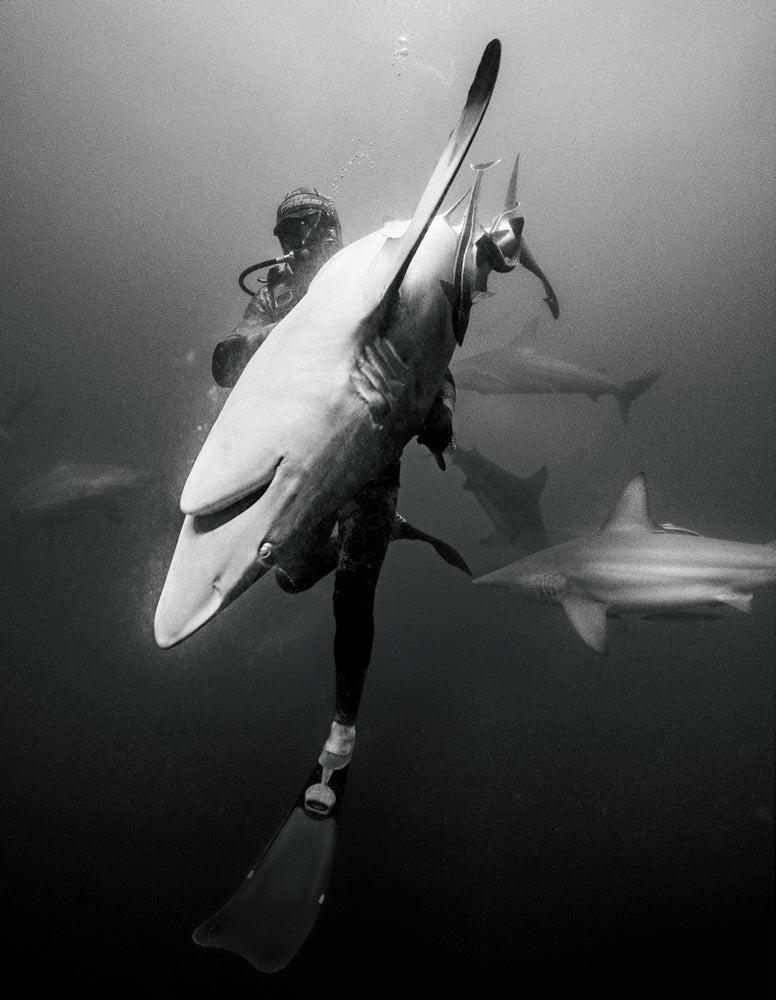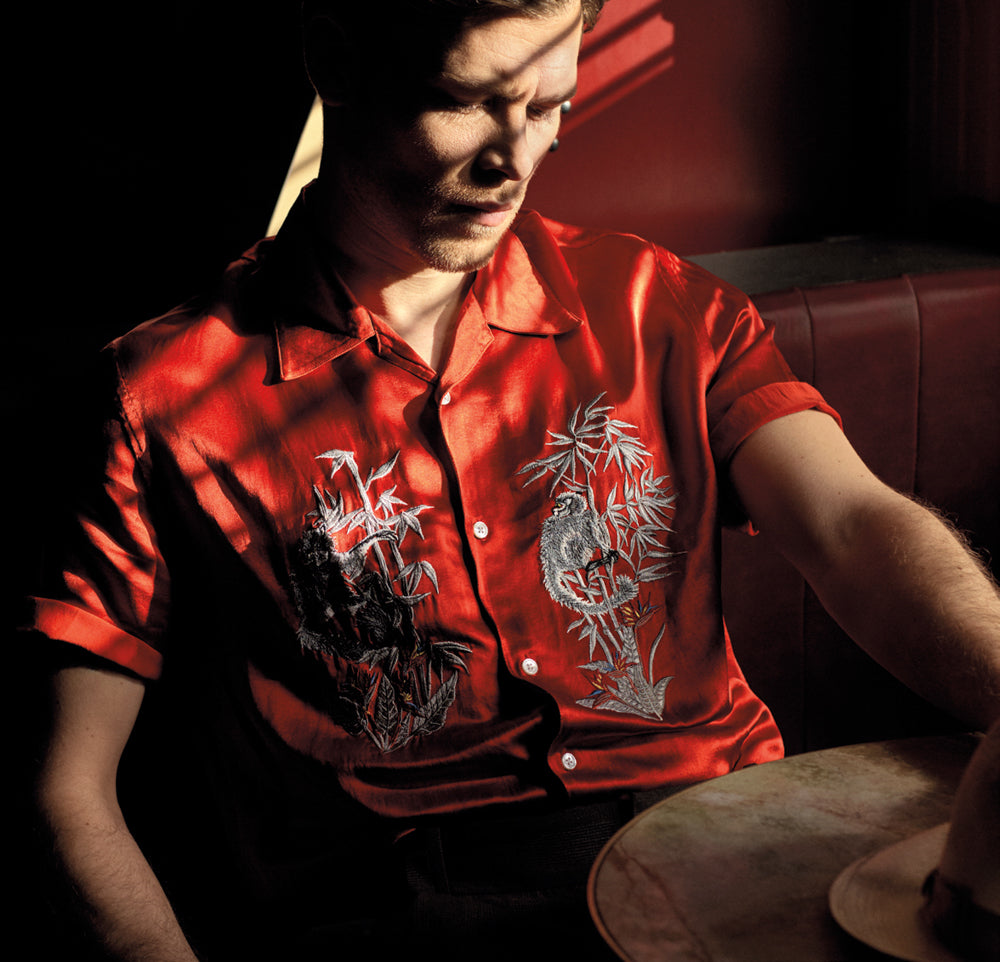
On The Outside
ON THE OUTSIDE


THE TRIALS AND TRIUMPHS OF TETSU IKUZAWA, JAPANESE RACING’S PLAYBOY PRINCE
In an industrial park just outside of Tokyo sits a gray-and-white warehouse so bland as to defy description, impossible to find twice even if, against explicit instructions, you haven’t destroyed your map.
The immaculate, brightly lit interior reveals an orderly, colorful hoard of old Porsches, vintage race cars, motorbikes, trophies, helmets, jackets, hi-fi radio equipment, cameras, and other artifacts from the meticulously documented, undeniably vivid life of its owner, Tetsu Ikuzawa.
He is one of Japan’s most revered grand prix racing drivers, but virtually unknown abroad. To this day, Ikuzawa is the only factory-sponsored Porsche racing driver in Japan. He helped establish the German marque in that country after an amazing victory as a privateer at the 1967 Japanese Grand Prix, where he drove one of the era’s most beautiful and successful race cars, the Porsche 906. And he did it on his own. While well-funded factory teams from Nissan and Toyota had squadrons of engineers and mechanics, Ikuzawa had to push his own car into position. “After that they started calling me the Lone Wolf,” he says, with no measurable amount of modesty.


“A lot of white guys who went on to F1 were not as good as me,” Ikuzawa says.
Owing to the vagaries of racing regulations, the ’67 grand prix in Japan was not part of the Formula One circuit at the time, but it did propel the resolute twenty-five-year-old onto the international stage. Later that year, Ikuzawa won the British Formula Three series, a sort of junior F1. “To be honest, I could not have been the world champion, but I could have been one of the great F1 drivers,” he says. “Because a lot of white guys who went on to F1 were not as good as me!” Still, it was the first time an Asian driver had won the series in the United Kingdom, and for a time, Ikuzawa lived a fast life in London. He bought himself an enormous Rolls-Royce as well as a signal yellow Porsche 911 Targa, and began dressing a bit like John Lennon.
It was a major departure from the buttoned-down, blue-blazer look he sported when he first arrived in London, which he attributes to one of his early motor racing sponsors, the Ivy League – inspired clothing brand VAN, whose founder Kensuke Ishizu commissioned the seminal book Take Ivy. Before that, in the late ’50s, he’d raced motorcycles and affected a sort of Brando-esque swagger in black leather gear, which is also now enshrined in Ikuzawa’s pristine warehouse.
Being one of the few Japanese men in London society at that time, Ikuzawa encountered plenty of discrimination, if not outright racism. He was completely unprepared for it, and a bit of the sting still lingers. But by Ikuzawa’s own admission, the racial tension was not an impediment to a full and interesting love life. Lots of girls wanted to get close to the enigmatic driver, who spoke no English at all when he arrived. “I was winning all the time, and not only on the racetrack,” he jokes. Racing took him to all the major European capitals, and after every grand prix there were excursions to nightclubs — with plenty of girls and loads of champagne. But if the debauchery ever approached James Hunt–like levels, it never descended into outright seediness. Motor racing at that time was a “high class” affair, Ikuzawa insists, and the British drivers and team owners were all well-bred sorts, keen on sportsmanship, cutting a dash, and always behaving like gentlemen.


“I was winning all the time, and not only on the racetrack,” Ikuzawa jokes.
Ikuzawa signed on with Porsche in 1968, and drove a Porsche 908 in the Six Hours of Watkins Glen edurance race in the United States that year. By 1971 he was back in his homeland to compete once more in the Japanese Grand Prix at the wheel of the now-iconic Porsche 917. A year later, he established his own racing club, Team Nippon, based out of the UK and in alliance with GRD (Group Racing Developments), another British manufacturer. Success proved elusive for Team Nippon and the team withdrew from European racing in 1973. At the twenty-four hour Le Mans race in France that year, Ikuzawa competed in a Japanese-built Sigma — the first Japanese car to ever qualify for the event — and later became one of the only Japanese drivers to have finished the race. He was also the director of the Nissan Europe racing team for a time. In 1977, driving a GRD-BMW, Ikuzawa achieved his last major victory, winning the Fuji Grand Champion Series. Semi-retired, in 1980 he returned to Le Mans to compete in a Kremer Porsche 935 Turbo, the factory racing version of the famed Porsche 911 Turbo.
At one point, Ikuzawa had houses in London and Monaco, but now, at seventy-three years old and on his third marriage, he prefers to spend his days in Tokyo with the closely guarded artifacts of his earlier years. He still owns several of his original race cars and motorbikes, including a 1962 Suzuki. “It must be a miracle!” he says. “One of the Ikuzawa freaks kept these cars. My lovers have all come back to me now.”
Appearances to the contrary, Ikuzawa doesn’t fetishize his vehicles, and refuses to name favorites. “For racing drivers, cars are just tools,” he says. Likewise, he has never compared himself to or tried to emulate other drivers, though he does admit to an admiration for current Formula One champ Lewis Hamilton: “I like him and I like his lifestyle,” he says. Hamilton drives for Mercedes AMG and Ikuzawa himself now drives Mercedes-AMG road cars.



“For racing drivers, cars are just tools,” Ikuzawa says.
Recently, Ikuzawa has embarked on a new obsession: buying up every right-hand-drive example he can find of the Porsche 964, the Porsche 911 variant manufactured from 1989 to 1994, though he characterizes it more as an investment strategy. And indeed the car’s value has been on the rise of late. The first 911 to feature much of the modern technology now common in today’s cars, including all-wheel drive, the 964 was also the first to offer Tiptronic automatic transmission, which Ikuzawa, contrary to most old-school motoring enthusiasts, prefers over manual.
With over sixty 964s now in his collection, not one of them is a stick shift. He dismisses those who say that automatics aren’t real cars, growling that “they don’t know what they are talking about. In Formula One you don’t have a manual transmission.” The one car he does still race, however, is a manual 1960s Porsche 911T — and he’s still winning, taking home trophies in classic and historic racing series.
“I win against these lightweight British sports cars with my heavy steel-bodied 911, and against much younger drivers,” he notes. “I am probably the oldest winner in motor racing history on the planet!” He classifies those who claim race car drivers aren’t real athletes as complete idiots. He trains for up to three months before an “extremely dangerous” race that might last all of twenty minutes. Ikuzawa fears that he will soon have to hang up his helmet for good, in the spotless warehouse where someday museum curators will find it, perfectly preserved for posterity.



